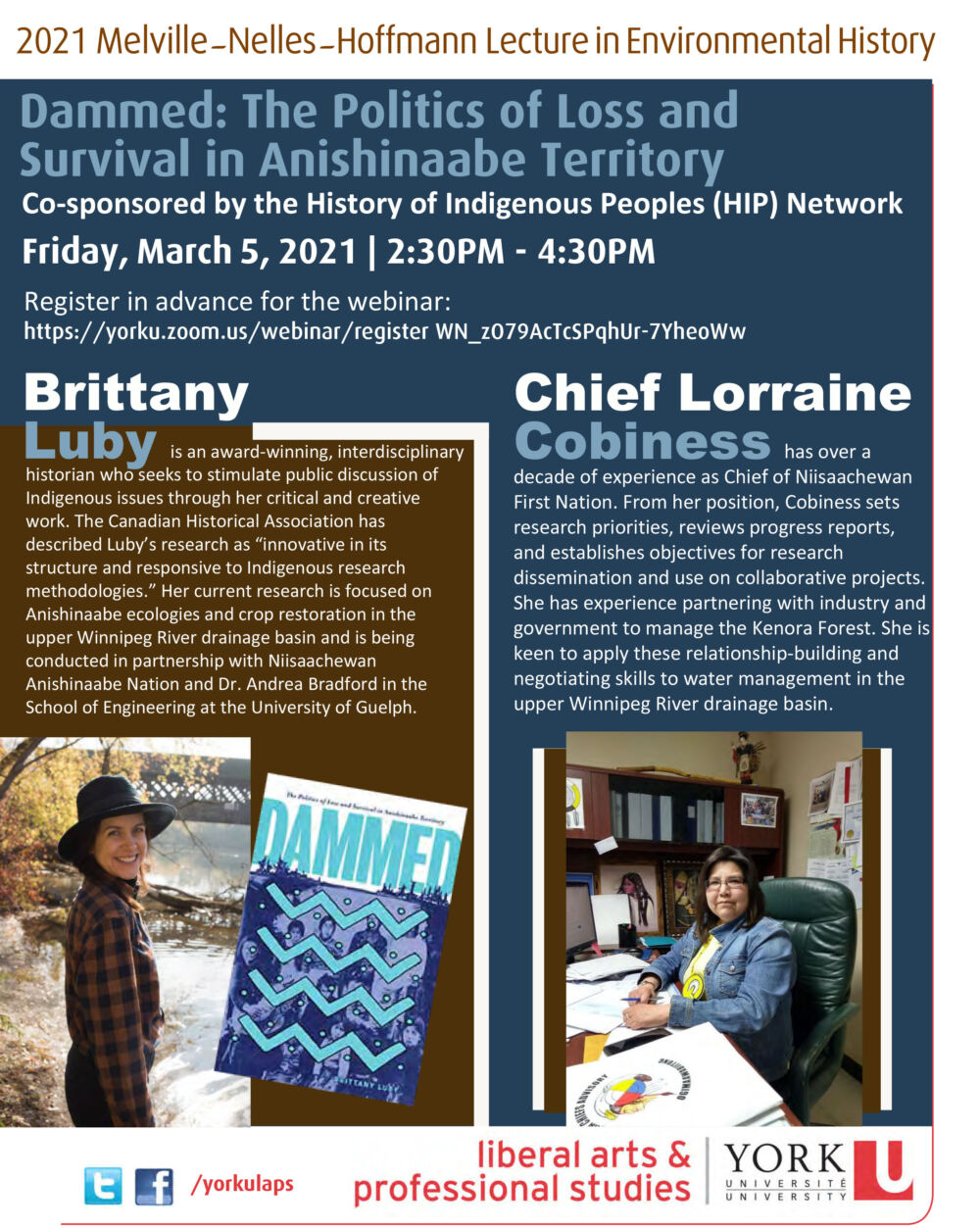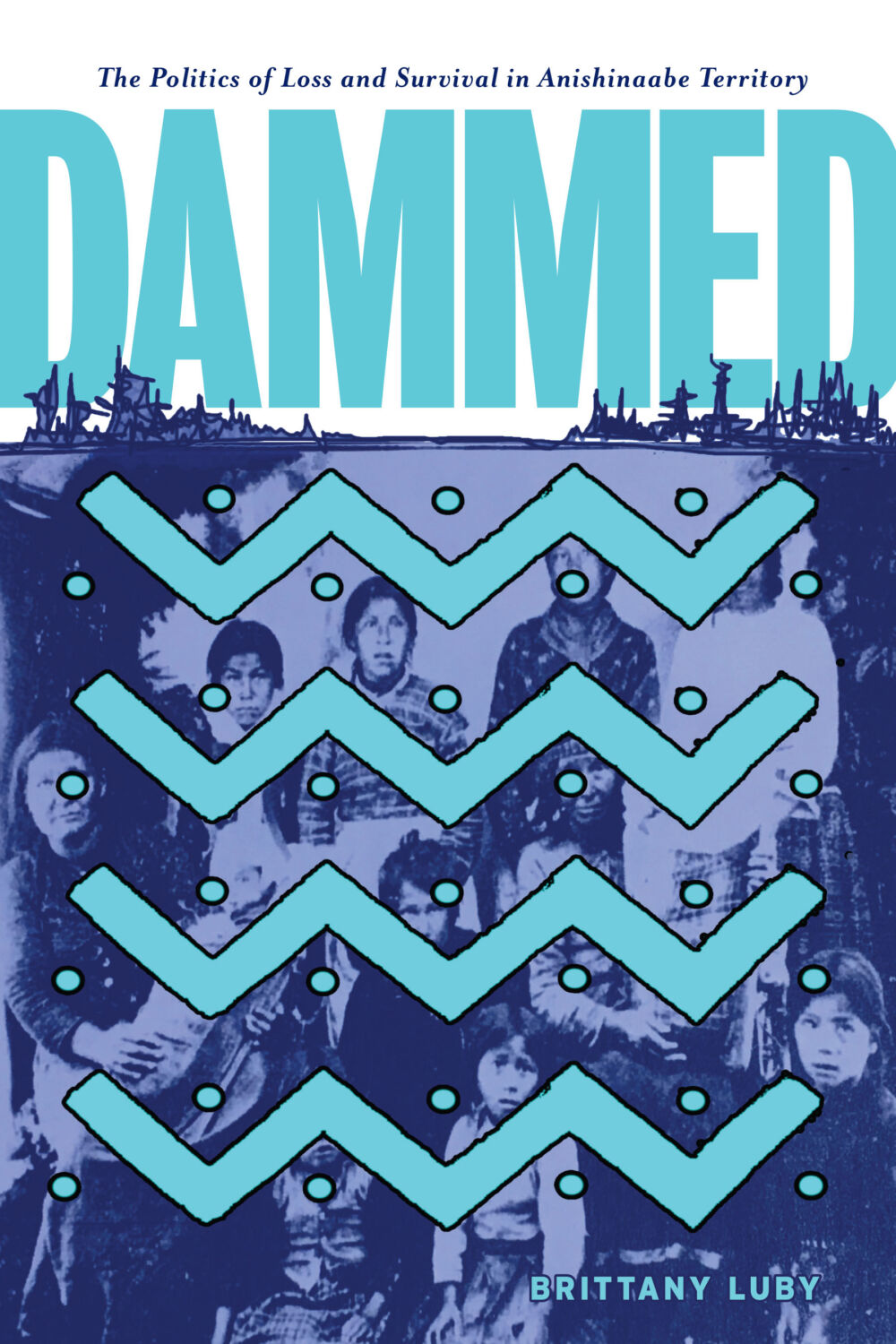
The Melville-Nelles-Hoffmann Environmental History Lecture is an annual speaking event hosted by the Department of History at York University. It is generously supported by two of the History Department’s founding environmental history professors, H.V. Nelles and Richard Hoffmann and it honours the memory of the late Elinor Melville, their colleague and leading researcher in the field of Mexican environmental history.
2021 Melville-Nelles-Hoffmann Lecture
Dammed: The Politics of Loss and Survival in Anishinaabe Territory
March 5, 2021
Brittany Luby is an award-winning, interdisciplinary historian who seeks to stimulate public discussion of Indigenous issues through her critical and creative work. The Canadian Historical Association has described Luby’s research as “innovative in its structure and responsive to Indigenous research methodologies.” Her current research is focused on Anishinaabe ecologies and crop restoration in the upper Winnipeg River drainage basin and is being conducted in partnership with Niisaachewan Anishinaabe Nation and Dr. Andrea Bradford in the School of Engineering at the University of Guelph
Chief Lorraine Cobiness has over a decade of experience as Chief of Niisaachewan First Nation. From her position, Cobiness sets research priorities, reviews progress reports, and establishes objectives for research dissemination and use on collaborative projects. She has experience partnering with industry and government to manage the Kenora Forest. She is keen to apply these relationship-building and negotiating skills to water management in the upper Winnipeg River drainage basin.
Register in advance for the webinar:
yorku.zoom.us/webinar/register/WN_zO79AcTcSPqhUr-7YheoWw
About Dammed:

Dammed explores Canada’s hydroelectric boom in the Lake of the Woods area. It complicates narratives of increasing affluence in postwar Canada, revealing that the inverse was true for Indigenous communities along the Winnipeg River.
Dammed makes clear that hydroelectric generating stations were designed to serve settler populations. Governments and developers excluded the Anishinabeg from planning and operations and failed to consider how power production might influence the health and economy of their communities. By so doing, Canada and Ontario thwarted a future that aligned with the terms of treaty, a future in which both settlers and the Anishinabeg might thrive in shared territories.
The same hydroelectric development that powered settler communities flooded manomin fields, washed away roads, and compromised fish populations. Anishinaabe families responded creatively to manage the government-sanctioned environmental change and survive the resulting economic loss. Luby reveals these responses to dam development, inviting readers to consider how resistance might be expressed by individuals and families, and across gendered and generational lines.
Luby weaves text, testimony, and experience together, grounding this historical work in the territory of her paternal ancestors, lands she calls home. With evidence drawn from archival material, oral history, and environmental observation, Dammed invites readers to confront Canadian colonialism in the twentieth century.
Find out more & order your copy here.
Posted by U of M Press
March 1, 2021
Tagged aboriginal, community, dammed, environment, history, indigenous, manitoba, women
Three UMP Books Reviewed in the Canadian Journal Of Native Studies! CANADA IS ... WHAT?! A crowd-sourced and tactile inquiry into our collective notions of "Canada"
